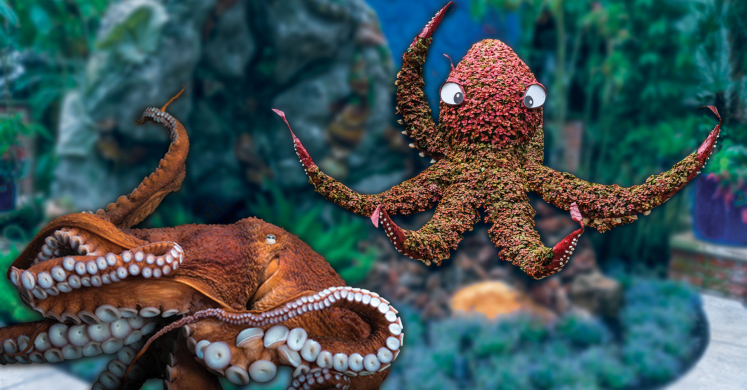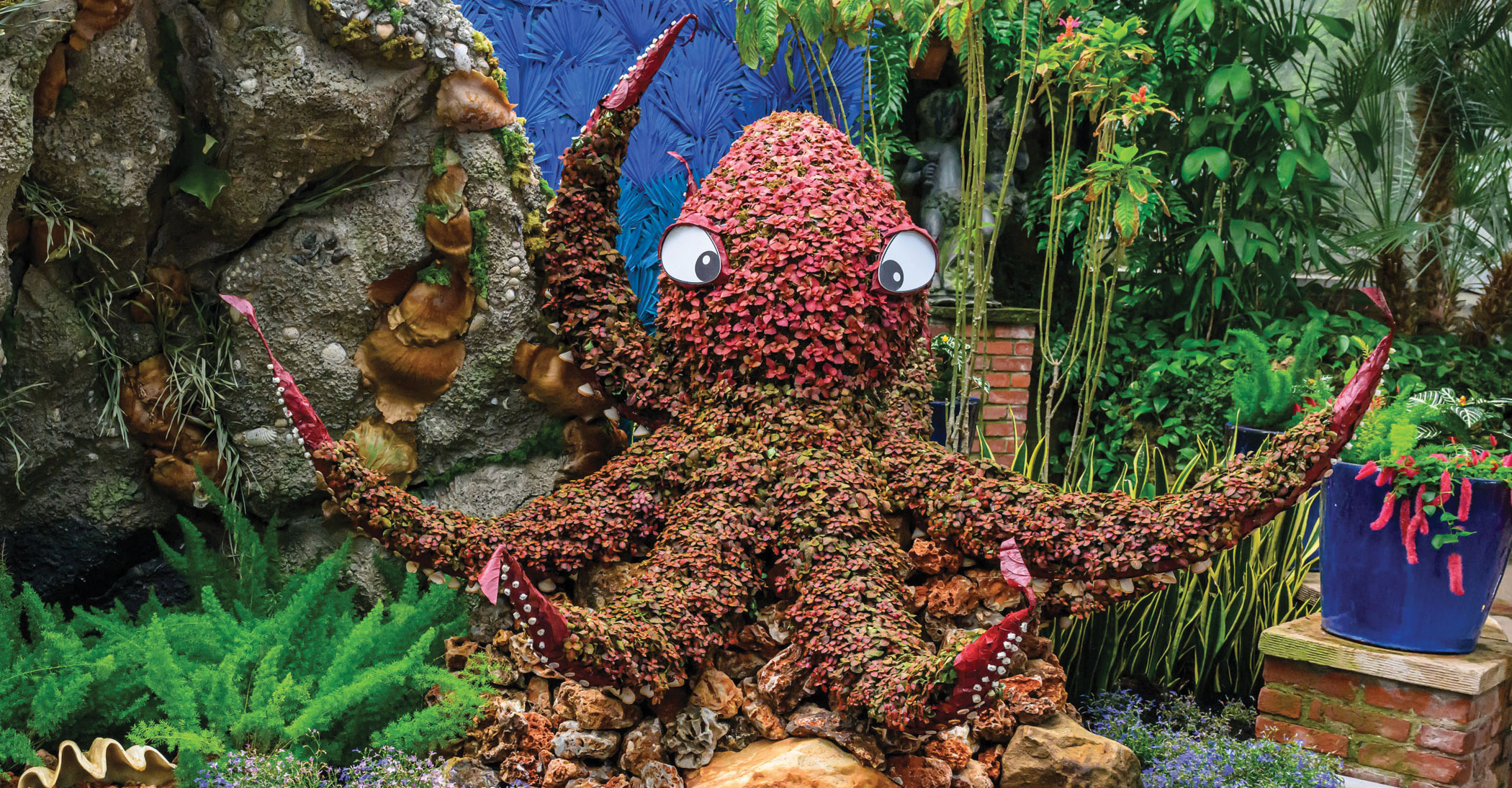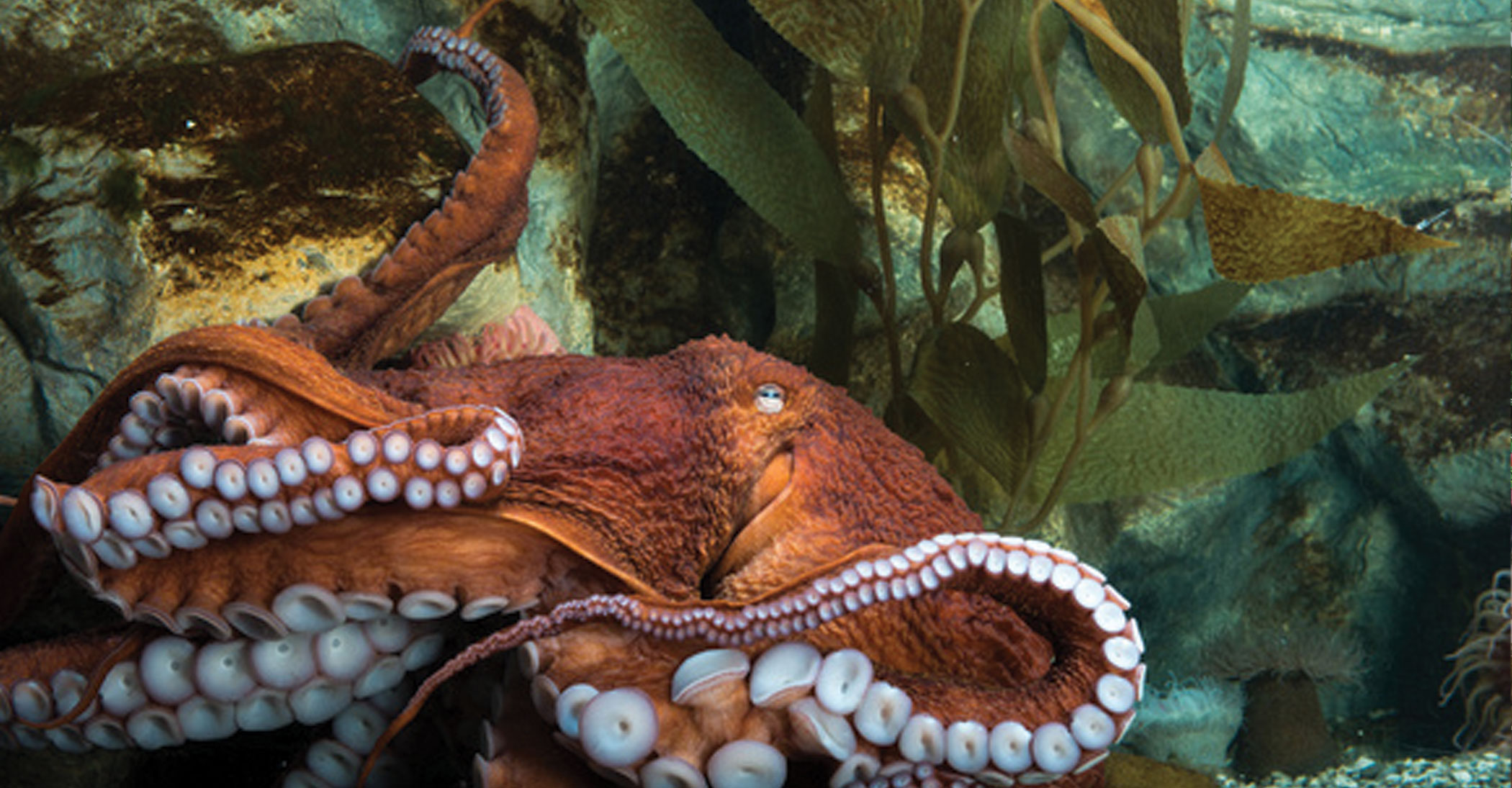Blog

Under the Sea Creations and FINspirations: All About Octopi
This year, Phipps’ Summer Flower Show: Under the Sea, transports you into an underwater adventure like never before, filled with vibrant flora, fascinating foliage and larger-than-life topiaries that bring each scene to life!
These topiaries were handcrafted with dried plant material and art supplies to emulate sea creatures in signature Phipps fashion. With help from the Pittsburgh Zoo & Aquarium, let’s dive right in to learn more about how our topiary fish friends compare to the real-life sea creatures they represent!

When you first enter the 1893 glasshouse, you encounter one of the world’s most recognizable sea creatures – our lovely topiary octopus. Nicknamed Oswall by Phipps staff, you can find this charming creature sitting near an alcove in our Palm Court. This massive octopus was created by sculpting and manipulating a wire frame into the ideal shape and then filling the frame with 'Mini Red' (Fittonia albivenis) and 'Red Flame' (Fittonia albivenis). Once the shape, color and plant materials were all in place, it was time to add the final touches! Our exhibits team added buttons and seashells for the suction cups along all eight arms and some giant eyes to bring our Oswall to life.
In this display, we mimic several habits of an octopus to demonstrate how they act in nature. For example, color changing lights are pointed at Oswall to reference an octopus’s ability to camouflage. Although we couldn’t capture every feature of the octopus as a topiary, our friends at the Pittsburgh Zoo and Aquarium helped us learn about the real life habitat, characteristics and more of the octopus. Read on to learn more interesting facts about these beautiful and unique creatures!

An octopus has eight arms – no tentacles—that are divided into four pairs. The two rear appendages will typically be used as the creature's “legs” to walk themselves along the sea floor, while the other available arms are used to search for food. An octopus will prefer to crawl or “walk” along the sea floor due to their heart structure! Octopi have three hearts, a primary heart that circulates blood throughout the entire body and two branchial hearts, that pump the blood through each of its gills. When an octopus swims, their primary heart becomes inactive, exhausting their energy quite quickly.
While along the sea floor, nearly all species of octopi act as predatory creatures by spending their time hunting and foraging for crustaceans, other mollusks, fish and cephalopods! Octopi can also radically change the shape of their soft bodies, allowing them to fit through small gaps in rocky structures. This allows them to secure a den within the smallest spaces or burrow under sand and mud!
Stay tuned as we highlight more of our aquatic inspired topiaries and their real-life counterparts bringing their interesting facts, characteristics and more to the surface!
Photos © Paul Vladuchick, Paul A. Selvaggio, Pittsburgh Zoo & Aquarium

